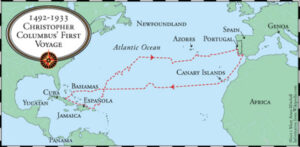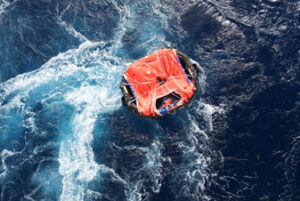“In 1492, Columbus sailed the ocean blue.” This is something we all heard growing up in school. Columbus proposed to sail due west from the Canary Islands (just off the coast of northern Africa) in hopes to find Japan and the riches of the East Indies. His plan would have worked, except there was a bunch of land in the way. He ended up landing in the Bahamas, which he called San Salvador.

Nearly 500 years later, Steven Callahan set sail from the Canary Islands to repeat the Columbus voyage. While Columbus had three large ships and a full compliment of crew and provisions, Steven was alone on a small sailboat. Six days after setting sail, the boat sank, leaving Steven stranded in the middle of the Atlantic Ocean. He was left with a 5 foot life raft, 3 pounds of food, 8 pints of water, a solar still, and a makeshift spear.


Every day on the raft was about survival. He had to catch fish to eat, properly set his solar still to collect small amounts of fresh water, and contend with sunburn and shark attacks. Each day, he would wake up to face this unpleasant reality. On day 43, it got worse. His raft sprung a leak that he could not patch, and he had to add the additional task of keeping the boat afloat manually. He did this for 33 more days, until on day 76, he was rescued. With no control of his direction for 76 days, Steven had drifted 1800 miles away from where his boat had first sunk.
In the book, The 7 Habits of Highly Effective People, Stephen Covey writes, “If you do nothing, you WILL get somewhere.” True – and it might be 1800 miles away from where you started. However, if you decide to do something, you have a much better chance of getting closer to where you want to be. Being reactive, dealing with the day to day problems of work, home, and community, is merely surviving, like Steven in his liferaft. Instead, follow the #1 habit of of highly effective people, and “be proactive.” Decide where you want to go, and chart a course.

